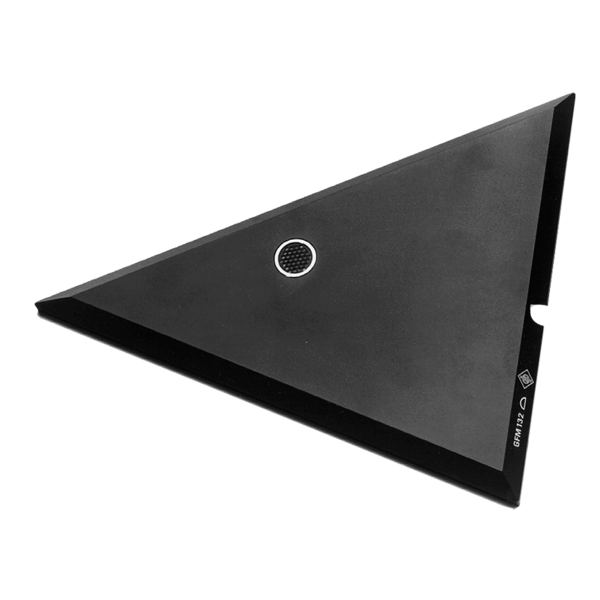

Boundary Layer Microphone
GFM 132
Neumann’s first and only boundary layer microphone. The GFM 132 was designed using computer simulations: The unique shape of the base plate avoids comb filter effects.
The problem solver for special recording situations. The uniform frequency response for all angles of incidence, with an increase in the upper frequency range, ensures clarity and presence even when recording distant sound sources. However, optimal results are also obtainable when the mic is located in the bass drum!
The GFM 132 is a boundary layer microphone. Through computer simulation Neumann optimized the design to be free of any comb filter effects due to reflections, typical of other such microphones. The smooth frequency response for all angles of incidence exhibits a rise in the upper frequency range. This assures that all sound sources, even distant ones, will be recorded with clarity and presence. Therefore, typical applications are for live recordings, such as in the orchestra pit of opera houses, theaters, and on stage. The back of the microphone has non-slip pads for its use in a horizontal or inclined position, and holes for wall suspension. It is supplied with a wooden case and a wind screen.
Boundary-layer microphones are generally characterized by the following features:
The GFM 132 boundary-layer microphone has a unique, computer generated shape that totally avoids these disadvantages. The path lengths from each edge point to the center of the transducer are distributed evenly for all wavelengths within the frequency range. This design eliminates any possible linear distortion of frequencies caused at the location of the electro-acoustic transducer by the interaction of the incoming primary sound field with the secondary sound field from diffraction at the edges of the plate. The operating range of the plate reaches from the lowest frequency causing a pressure doubling in front of the plate to the upper limit of the audible range. The microphone features a smooth frequency response for all angles of incidence, with a slight rise in amplitude in the upper frequency range. This assures that all sound sources, even dis-tant ones, will be recorded with clarity and presence.
The GFM 132 uses transformerless circuitry and operates on 48 V phantom power. The usual output transformer is replaced by an electronic circuit. As with traditional transformers, this design ensures good common mode rejection and prevents RF interference that may influence the balanced audio signal. The microphone features high output capability and extremely low self noise. It provides exceptionally clean sound reproduction free of coloration.
The microphone has a 10 dB attenuation switch to prevent the input of the following unit from being overloaded. The switch is located next to the cable connector at the side of the GFM 132 boundary layer microphone.
| Diameter | 213 mm |
|---|---|
| Length | 168 mm |
| Weight | 460 g |
| Current consumption (P48, IEC 61938) | 2 mA |
| Directional Pattern | Hemispherical |
| Frequency Range | 20 Hz ... 20 kHz |
| Matching connector | XLR 3 F |
| Rated Impedance | 50 Ohms |
| Supply voltage (P48, IEC 61938) | 48 V ± 4 V |
| Acoustical operating principle | Pressure transducer |
| Maximum output voltage | 10 dBu |
| Rated load impedance | 1000 Ohms |
| Maximum SPL for THD 0.5% | 137 dB |
| Equivalent noise level, A-weighted | 14 dB-A |
| Sensitivity at 1 kHz into 1 kohm | 18 mV/Pa |
| Maximum SPL for THD 0.5% with preattenuation | 147 dB |
| Signal-to-noise ratio, CCIR (re. 94 dB SPL) | 70 dB |
| Signal-to-noise ratio, A-weighted (re. 94 dB SPL) | 80 dB |
| Signal-to-noise ratio, CCIR (re. 94 dB SPL) | 70 dB |
WARNING (for California residents only): This product can expose you to chemicals including lead, which is known to the State of California to cause cancer and birth defects and other reproductive harm. For more information go to: www.p65warnings.ca.gov.